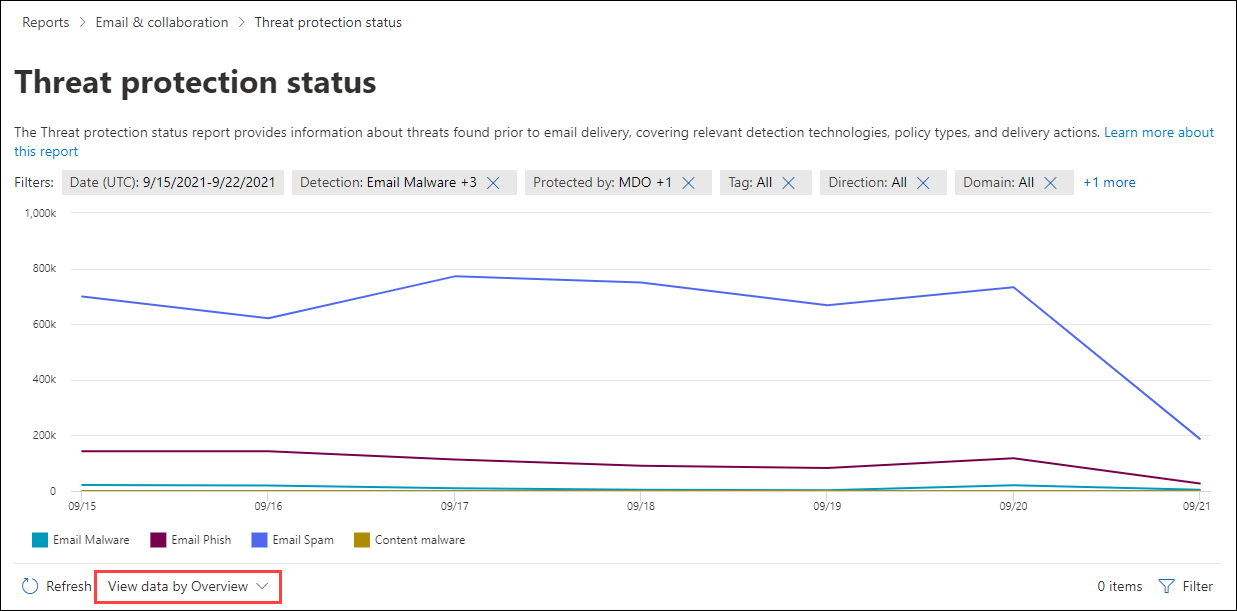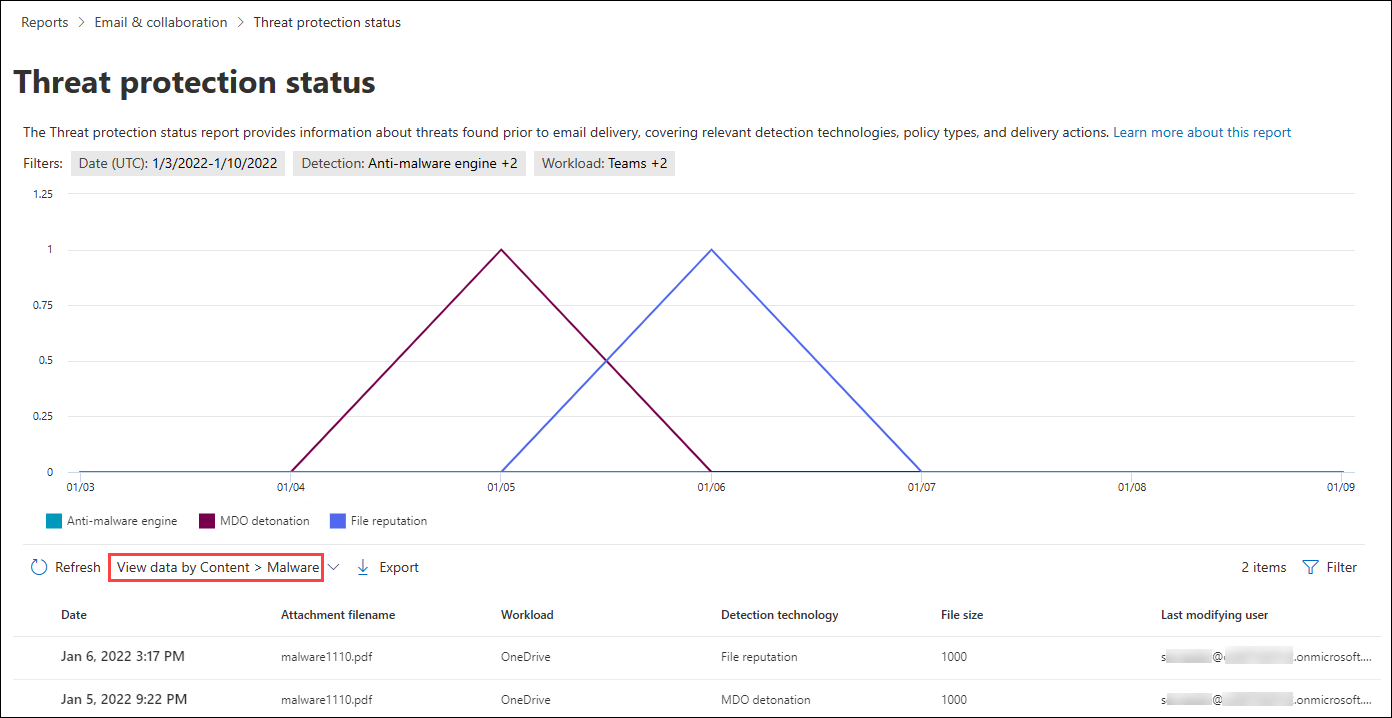Monitor security reports for Microsoft Teams
The Microsoft Defender portal provides reports that allow you to monitor potential security threats in your organization. Even though threat security reports may not be directly related to Microsoft Teams, they can alert you to suspicious activity that's threatening the security of your organization.
General security reports
Microsoft Defender portal contains a dashboard that displays security trends and tracks the protection status of your identities, data, devices, apps, and infrastructure.
To view the report in the Microsoft Defender portal, go to Reports > Security report.
Identities: This category of reports provides data from Microsoft Entra Risky Users report and Global Microsoft Entra admin roles. Reports are related to Microsoft Teams because of sign-in activity to Microsoft Teams from different types of devices.
Data: This category of reports provides data from multiple sources, such as users with the most shared files, DLP policy matches, false positives and overrides. Reports are related to Teams because of data shared and accessed by Teams users.
Devices: This category of reports provides data from Microsoft Intune on devices at risk, device threat analytics, device compliance, malware on devices and users with malware detection. Reports are related to Microsoft Teams because of large numbers of mobile devices where Teams is installed.
Apps: This category of reports provides data from Microsoft Defender for Cloud Apps on threats from different apps, such as privileged OAuth apps, suspicious admin activity, impersonations, and cloud activity geographical locations. Reports are related to Microsoft Teams because of different apps that are integrated with Teams.
Defender for Office 365 reports
Microsoft Defender for Office 365 contains various security-related reports. To view the Defender for Office 365 reports, go to the Microsoft Defender portal > Reports > Email & collaboration > Email & collaboration reports, and select View details of the report.
Threat protection status report
The Threat protection status report is available in both EOP and Defender for Office 365; however, the reports contain different data. For example, EOP customers can view information about malware detected in email, but not information about malicious files detected by Safe Attachments for SharePoint, OneDrive, and Microsoft Teams.
The report provides the count of email messages with malicious content, such as files or website addresses (URLs) that were blocked by the anti-malware engine, zero-hour auto purge (ZAP), and Defender for Office 365 features like Safe Links, Safe Attachments, and impersonation protection features in anti-phishing policies. You can use this information to identify trends or determine whether organization policies need adjustment.
To view the report, go to Reports > Email & collaboration reports. On the Email & collaboration reports page, find Threat protection status and then select View details.
In the View data by Content > Malware view, you can find the Malicious files detected in Microsoft Teams by filtering the workload.
URL protection report
The URL protection report provides summary and trend views for threats detected and actions taken on URL select as part of Safe Links. This report won't have select data from users where the Safe Links policy was applied when the Track user select option isn't selected.
To view the report, go to Reports > Email & collaboration reports. On the Email & collaboration reports page, find URL protection report and then select View details.
In the View data by URL click by application view, you can find the number of URL select by Teams by filtering the apps.


